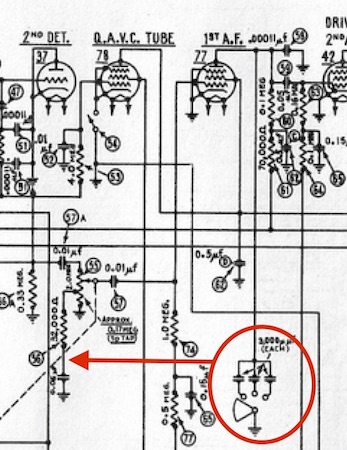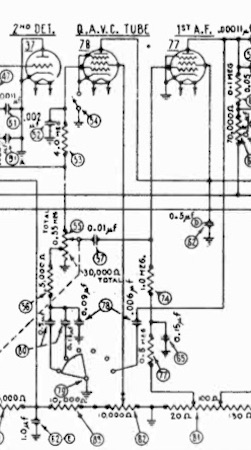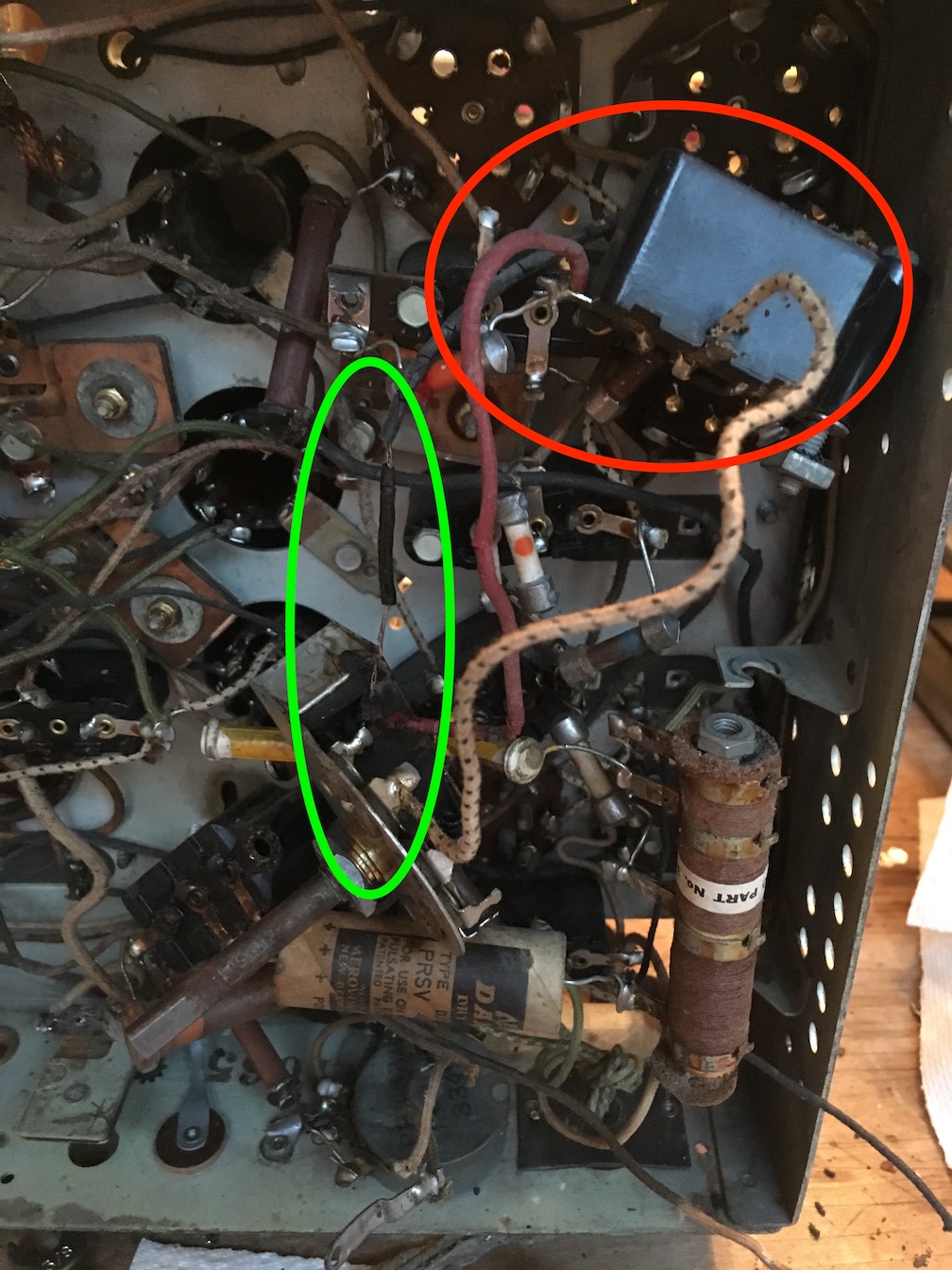01-08-2019, 12:35 PM
I am going to start recapping my 16b this weekend, but first some (more) questions:
My 16b has the four position tone control (#79) with the external Bakelite cap (#78).
From the first schematic below, it looks like the original tone control (i.e., the 3-way switch without the external Bakelite cap) is connected to the plate of the 1st AF stage.

From the second schematic, it looks like the 4-way version of the switch (with the external Bakelite cap) has been moved between the resistor and the cap in the circuit leading from the volume control.

The cap that is grounded in the original volume-control circuit is now replaced by a cap (0.09 uF grounded) in the new, two-cap Bakelite block with the second cap (0.006 uF ungrounded) being connected on one side to the plate of the 1st AF stage and on the other side to the fourth position of the tone control. That cap is grounded only when the switch is in the 4th position.
I know that Electrical Engineers are fiendishly clever, but this does make some sense to an old English major.
The attached pic shows my actual situation. The black wire with broken insulation (green oval) leads to the plate of the 1st AF stage, but instead of going directly to the Bakelite block (red oval), it first goes to the tone control (as in the original version) and only then (via the red wire) to the end tab of Bakelite block. The white wire with black tracer leads back from the block to the fourth position of the tone control and then (through the switch) to ground.

This means that the plate of the 1st AF stage is always in the circuit instead of being switched-in only when the tone control is in the fourth position. That’s wrong, right?
And could that be the reason the insulation has deteriorated so much? (What gauge wire should I use? Don’t want any fires.)
I don’t know what the internal circuitry of the Bakelite block is, but it seems the the two caps have to be independent electrically (i.e., no common ground, since the 0.006 uF is grounded only when the switch is in the 4th position).
Sorry for being so long-winded, but can anyone provide one or more clues?
My 16b has the four position tone control (#79) with the external Bakelite cap (#78).
From the first schematic below, it looks like the original tone control (i.e., the 3-way switch without the external Bakelite cap) is connected to the plate of the 1st AF stage.
From the second schematic, it looks like the 4-way version of the switch (with the external Bakelite cap) has been moved between the resistor and the cap in the circuit leading from the volume control.
The cap that is grounded in the original volume-control circuit is now replaced by a cap (0.09 uF grounded) in the new, two-cap Bakelite block with the second cap (0.006 uF ungrounded) being connected on one side to the plate of the 1st AF stage and on the other side to the fourth position of the tone control. That cap is grounded only when the switch is in the 4th position.
I know that Electrical Engineers are fiendishly clever, but this does make some sense to an old English major.
The attached pic shows my actual situation. The black wire with broken insulation (green oval) leads to the plate of the 1st AF stage, but instead of going directly to the Bakelite block (red oval), it first goes to the tone control (as in the original version) and only then (via the red wire) to the end tab of Bakelite block. The white wire with black tracer leads back from the block to the fourth position of the tone control and then (through the switch) to ground.
This means that the plate of the 1st AF stage is always in the circuit instead of being switched-in only when the tone control is in the fourth position. That’s wrong, right?
And could that be the reason the insulation has deteriorated so much? (What gauge wire should I use? Don’t want any fires.)
I don’t know what the internal circuitry of the Bakelite block is, but it seems the the two caps have to be independent electrically (i.e., no common ground, since the 0.006 uF is grounded only when the switch is in the 4th position).
Sorry for being so long-winded, but can anyone provide one or more clues?



![[-] [-]](https://philcoradio.com/phorum/images/bootbb/collapse.png)


